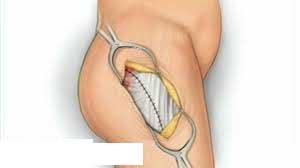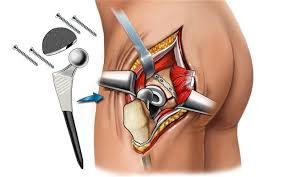Introduction to Shoulder Arthroplasty
Shoulder arthroplasty, commonly referred to as shoulder replacement surgery, is a medical procedure aimed at relieving pain and restoring function in patients with severe shoulder joint conditions. This surgical intervention becomes particularly important for individuals suffering from a torn rotator cuff, a condition where the muscles and tendons around the shoulder become damaged, leading to pain and reduced mobility. Understanding this procedure requires a basic knowledge of the shoulder’s anatomy, which includes the humerus, clavicle, and scapula, as well as the intricacies of the rotator cuff itself.
The shoulder joint is one of the most mobile joints in the human body, allowing for a wide range of motion necessary for various daily activities. However, injuries or degenerative diseases can severely impact its functionality. A torn rotator cuff can lead to chronic pain and weakness, making activities such as lifting, reaching, or even resting difficult. In these cases, shoulder arthroplasty may provide a solution by replacing damaged parts of the shoulder with artificial components, thus alleviating pain and restoring movement.
It is crucial for patients experiencing shoulder issues to seek consultation with a specialist like Dr. Vibhore Singhal, who has significant expertise in diagnosing and treating shoulder injuries. A thorough evaluation and appropriate imaging studies are essential to determine the extent of the damage and the most suitable treatment options. This may include physical therapy, medication, or surgical interventions like shoulder arthroplasty, depending on the severity of the rotator cuff tear. By consulting a specialist, patients can gain clarity on the best course of action for their individual circumstances.
Indications for Shoulder Arthroplasty in Torn Rotator Cuff Cases
Shoulder arthroplasty, or shoulder joint replacement, is often considered for patients with torn rotator cuffs when conservative treatments prove ineffective. The decision to proceed with this surgical intervention is multifactorial and largely depends on the severity of the tear, the age and activity level of the patient, and the overall functionality of the shoulder. Each of these factors plays a critical role in determining whether surgery is the most appropriate option.
Severe rotator cuff tears, particularly those classified as full-thickness or irreparable, typically show limited improvement with non-surgical therapies such as physical therapy, corticosteroid injections, or pain management strategies. Symptoms like persistent pain, marked weakness, and significant loss of mobility are often indicators that surgical intervention may be warranted. Dr. Vibhore Singhal emphasizes the importance of patient-reported outcomes to evaluate the effect of these symptoms on daily life, as this could lead to the recommendation for shoulder arthroplasty.
Age and activity level are other crucial factors that Dr. Singhal considers when assessing the need for shoulder arthroplasty. Younger, active patients may have different expectations and rehabilitation goals compared to older individuals who may have more sedentary lifestyles. For younger patients, reconstructive strategies aimed at repairing the rotator cuff may be prioritized to re-establish function. Conversely, older patients with less physically demanding lifestyles may benefit from shoulder arthroplasty as a means to alleviate pain and improve quality of life, regardless of a torn cuff.
Ultimately, the decision to perform shoulder arthroplasty is a collaborative process between the surgeon and the patient. By thoroughly evaluating the severity of the rotator cuff tear, the patient’s age, their level of physical activity, and existing shoulder functionality, practitioners can make informed decisions that align with patients’ needs and expectations.
Types of Shoulder Arthroplasty Procedures
Shoulder arthroplasty, commonly referred to as shoulder replacement surgery, encompasses various procedures tailored to address specific shoulder pathologies such as a torn rotator cuff. Two primary types of shoulder arthroplasty are commonly performed: total shoulder arthroplasty (TSA) and reverse shoulder arthroplasty (RSA). Each of these procedures serves distinct clinical purposes and has unique functional designs geared towards enhancing patient outcomes.
Total shoulder arthroplasty involves replacing both the glenoid (socket) and humeral head (ball) of the shoulder joint with prosthetic components. This procedure is typically indicated for patients suffering from severe arthritis or shoulder joint degeneration, often resulting from cuff tears. By restoring the normal anatomical alignment and mechanics of the shoulder, TSA aims to alleviate pain and improve overall function. Dr. Vibhore Singhal emphasizes the importance of this procedure for patients with an intact rotator cuff, as it can lead to significant pain relief and mobility restoration.
In contrast, reverse shoulder arthroplasty features a unique design where the positions of the ball and socket components are reversed. This innovative approach is particularly beneficial for patients with massive rotator cuff tears accompanied by arthritis, where traditional TSA may not yield optimal results. RSA allows for a different muscular dynamic, enabling the deltoid muscle to take on a more central role in shoulder motion. Dr. Singhal often recommends this procedure for older patients or those with insufficient rotator cuff function, as it can greatly enhance their ability to lift the arm and perform daily activities.
When determining the most suitable type of shoulder arthroplasty, it is imperative to consider individual patient factors, including age, the type of rotator cuff injury, level of pain, and functional limitations. Engaging with a qualified orthopaedic surgeon in Dwarka, such as Dr. Singhal, can provide personalized insights that facilitate informed decisions regarding the optimal surgical intervention.
Recovery and Rehabilitation After Shoulder Arthroplasty
The recovery and rehabilitation process following shoulder arthroplasty for a torn rotator cuff is critical in ensuring optimal outcomes. Initially, after the surgical intervention, patients typically experience a hospitalization period, which may last from one to several days, depending on individual circumstances and the complexity of the surgery. Orthopaedic in Dwarka Dr. Vibhore Singhal, emphasize adherence to prescribed guidelines during this initial phase to facilitate healing.
Upon discharge, patients are usually instructed to wear a supportive sling for the first few weeks, which helps to immobilize the shoulder. During this time, a gradual return to daily activities is encouraged, but it is essential to avoid any movements that may strain the shoulder joint. Pain management is a significant aspect of recovery. Commonly prescribed medications include nonsteroidal anti-inflammatory drugs (NSAIDs) and, if necessary, stronger pain relievers to manage post-operative discomfort. Effective pain management protocols can enhance a patient’s overall rehabilitation experience, allowing for better participation in prescribed therapy sessions.
Physical therapy plays a vital role in restoring shoulder function after shoulder arthroplasty. Patients typically begin a structured rehabilitation program within a few weeks post-surgery, under the guidance of a licensed physical therapist. The rehabilitation process often starts with gentle range-of-motion exercises, progressively advancing to strengthening routines as the shoulder’s healing permits. Dr. Vibhore Singhal highlights the importance of following the rehabilitation schedule closely to reduce the risk of complications and to optimize the recovery trajectory.
Recovery timelines vary widely among patients, influenced by factors such as age, overall health, and adherence to rehabilitation protocols. Generally, patients can expect to regain substantial mobility and strength within three to six months. Close communication with the healthcare team can help patients navigate their rehabilitation journey effectively, ensuring they achieve the best possible results after shoulder arthroplasty.





